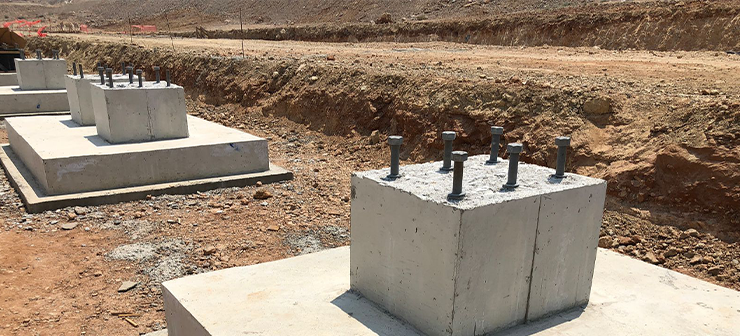All Services

Civil Services
Civil services in construction and infrastructure development involve a comprehensive array of activities to ensure the safety, functionality, and durability of buildings and infrastructure. These services encompass planning, design, construction, and ongoing maintenance, applying engineering principles to address various challenges in the built environment.
1. Epoxy Chemical Anchoring & Rubber Rebar Dwelling:
Epoxy chemical anchoring and rebar dowelling are specialized techniques used in civil engineering and construction to securely attach structural elements, such as steel rebar or anchor bolts, to concrete or other substrates. These methods are critical for ensuring the structural integrity and stability of various construction projects.
2. Jacketing & Structure Re Strengthening:
Jacketing and structural re-strengthening are techniques used in civil engineering to enhance existing structures’ strength, stability, and durability. These methods are often employed to repair, retrofit, or upgrade buildings, bridges, and other infrastructures that have weakened over time or need to meet higher load-bearing capacities due to changes in use, increased safety requirements, or damage from environmental factors.
3. Anchoring In Heavy Ms Structure And Profiles:
Anchoring in heavy MS (Mild Steel) structures and profiles refers to the process of securing large and heavy steel components, such as beams, columns, or other structural profiles, to a concrete foundation or other substrates. This is essential in civil engineering to ensure the stability, safety, and load-bearing capacity of the structure. The anchoring process involves using various types of anchors or fasteners that are capable of withstanding the significant loads and forces imposed by the heavy steel structures.
4. Core Cutting With Anti-Vibration Tool:
Core cutting with anti-vibration tools is a specialized process in civil engineering that involves drilling or cutting through concrete, masonry, or other hard materials using core drills equipped with anti vibration technology. This method is commonly used in construction and renovation projects to create precise openings for pipes, cables, conduits, or other infrastructure needs while minimizing vibrations that can damage the surrounding structures or cause discomfort to workers.
5. Mechanical/Anchoring Structure Solutions:
Mechanical anchoring structure solutions in civil services refer to the methods and systems used to secure structural elements, such as steel beams, columns, or other heavy components, to concrete or other substrates using mechanical anchors. These solutions are essential for ensuring the stability and load bearing capacity of buildings, bridges, and other infrastructure.
6. Expert Fixing And Pulling Structure:
Expert fixing and pulling structures in civil services refers to specialized techniques and methods used for the precise installation (fixing) and alignment or adjustment (pulling) of structural elements in construction projects. These tasks are often complex and require a high level of expertise to ensure that structural components are correctly positioned, securely attached, and aligned according to the design specifications.
7. Hydra jaws Pull Out Tester:
The Hydra Jaws Pull-Out Tester is a device used in civil engineering and construction to assess the pull-out strength of anchors, bolts, and fasteners in concrete, masonry, and other substrates. It ensures anchoring systems meet safety and performance standards by testing their load-bearing capacity.
8. Ferro Scanning:
Ferro scanning (also known as Ferro scan or Ferroscan) is a non-destructive testing method used in civil engineering to detect and map the presence of reinforcement steel (rebar) within concrete structures. This technique is essential for assessing the condition and layout of reinforcement in concrete elements such as slabs, beams, and columns, which can affect the structural integrity and durability of the building.
